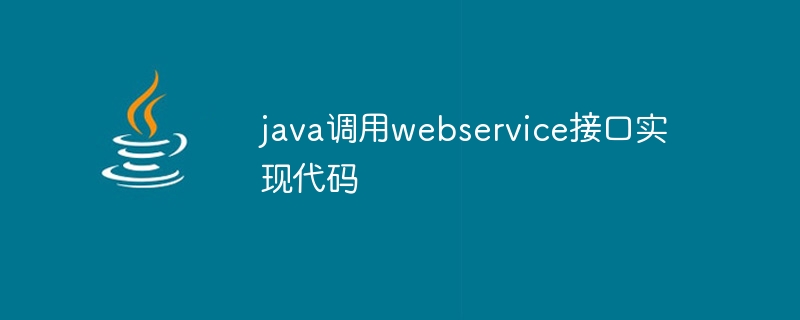

Title: Java calling WebService interface implementation code example
Introduction:
In modern software development, Web Service is a commonly used technical solution, which can Enable communication between different platforms and languages. In Java development, calling the WebService interface is a basic task. This article will use a specific code example to demonstrate how to use Java to call the WebService interface.
1. Introduction to WebService
WebService is a platform- and language-independent technology based on the HTTP protocol. It realizes communication between different applications by providing a unified interface. It uses XML format for data exchange and is often used in fields such as distributed systems, enterprise application integration, and cloud computing.
2. Preparation work
Before starting, we need to prepare the following work:
3. Create a Java project
First, we open Eclipse and create a new Java project. The following is the file structure in the example code:
src
com.example
4. Writing code examples
We create a Java class named HelloWorldClient and write the following code in it:
package com.example; import javax.xml.namespace.QName; import javax.xml.ws.Service; import java.net.URL; public class HelloWorldClient { public static void main(String[] args) { try { // 创建URL对象,用于访问WebService接口 URL url = new URL("http://www.example.com/webservice?wsdl"); // 创建QName对象,用于指定WebService命名空间和服务名称 QName qName = new QName("http://www.example.com/", "HelloWorldImplService"); // 创建Service对象,并传入URL和QName参数 Service service = Service.create(url, qName); // 获取HelloWorld接口的实例对象 HelloWorld helloWorld = service.getPort(HelloWorld.class); // 调用远程WebService接口的方法 String result = helloWorld.sayHello("World"); // 输出结果 System.out.println("WebService返回结果:" + result); } catch (Exception e) { e.printStackTrace(); } } }
5. Code analysis
6. Run the example
In Eclipse, right-click the HelloWorldClient class and select "Run As" -> "Java Application" to run the example code. If everything goes well, you will see the following output in the console:
WebService返回结果:Hello, World!
Conclusion:
Through the sample code in this article, we learned how to use Java to call the WebService interface. By creating URL, QName and Service objects, and using instances of the interface, you can easily call methods of the WebService interface and process the returned results. This provides a simple and feasible solution for us to use WebService in Java applications. Of course, more complex situations may be encountered in actual applications, and we need to adjust and handle them according to specific situations. However, the sample code provided in this article can be used as a starting point for readers to reference and learn from.
The above is the detailed content of Implement WebService interface call using Java. For more information, please follow other related articles on the PHP Chinese website!
